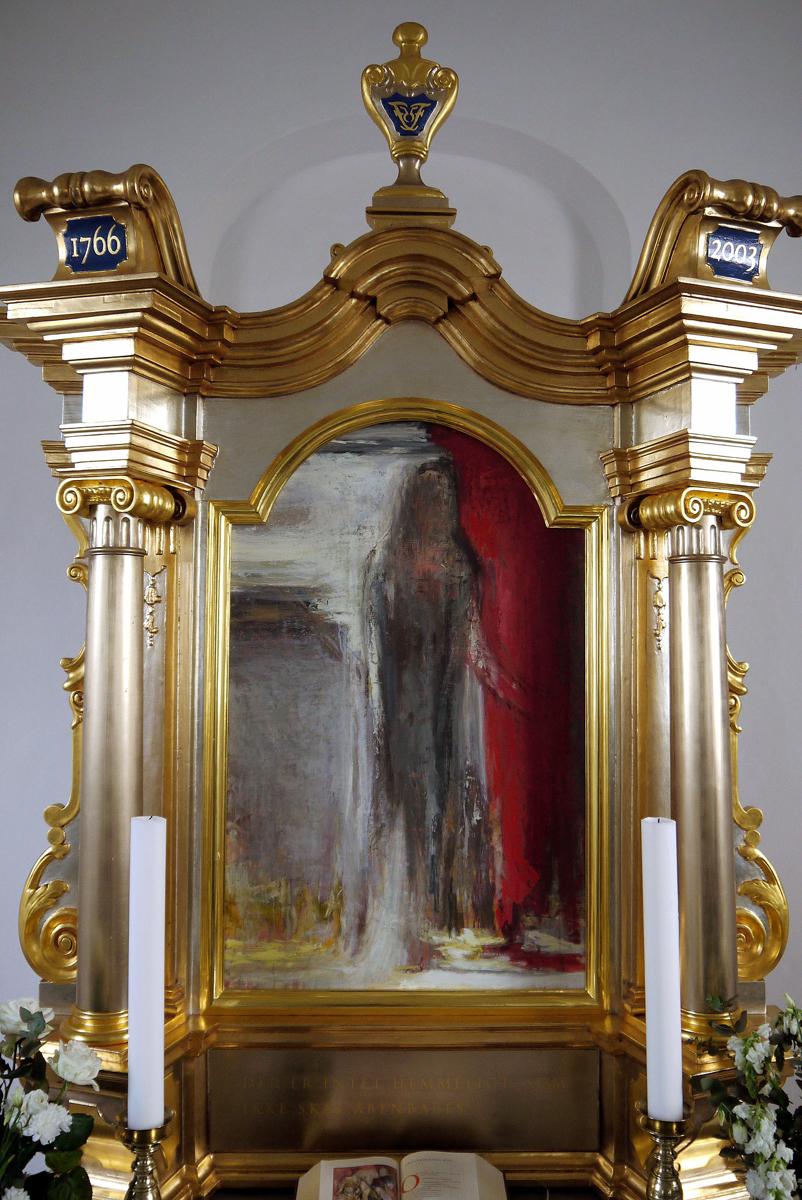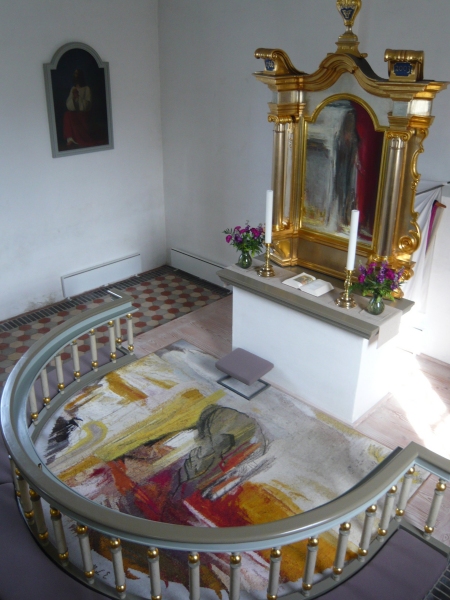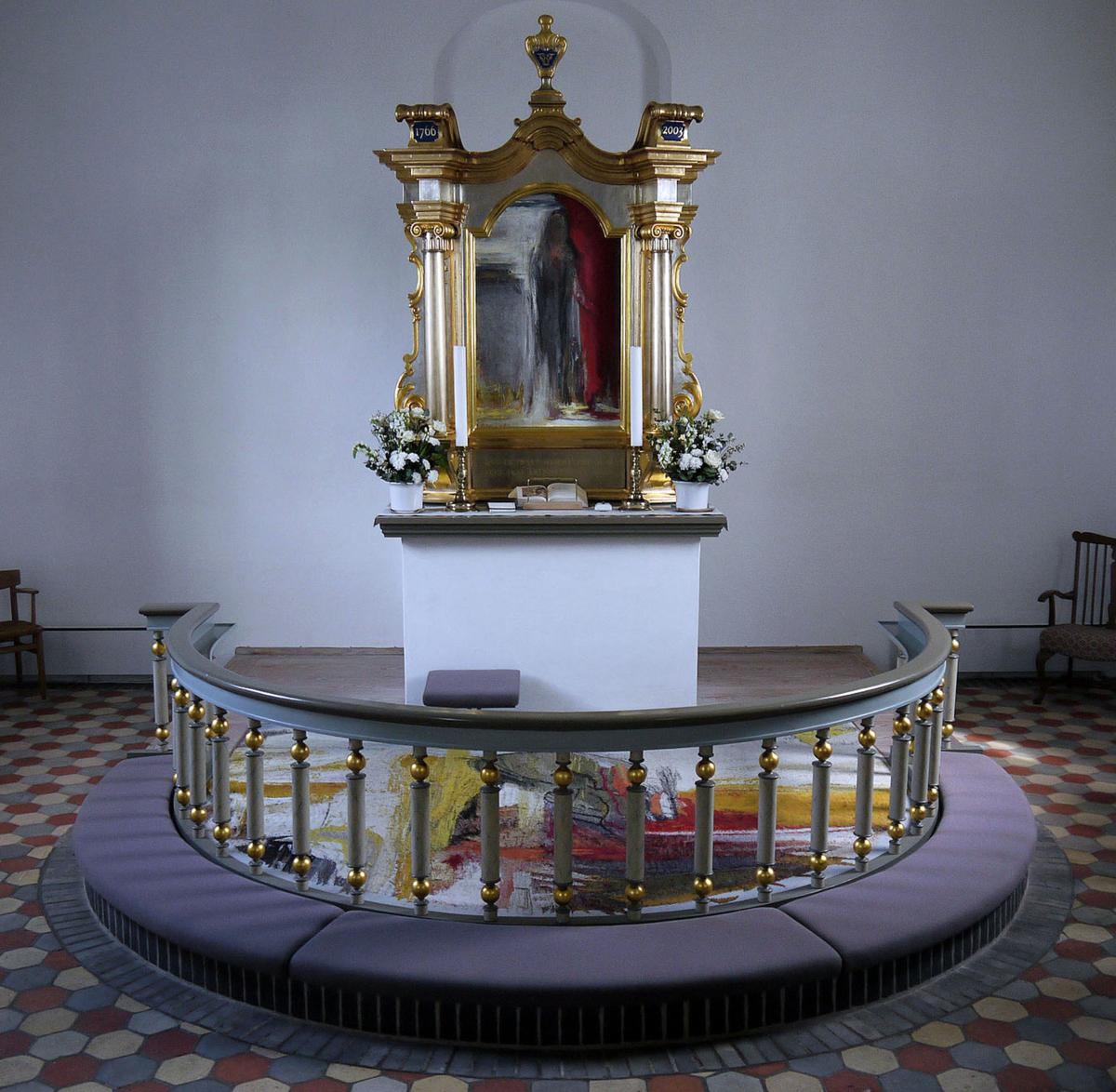December 22: Salvation Has Come
♫ Music:
Day 24 - Tuesday, December 22
Title: SALVATION HAS COME
Scripture: Zechariah 9:9
Rejoice greatly, O daughter of Zion; shout, O daughter of Jerusalem: Behold, thy King cometh unto thee: He is just, and having salvation. He is the righteous Savior.
Poetry:
Mosaic of the Nativity
(Serbia, Winter 1993)
by Jane Kenyon
On the domed ceiling God
is thinking:
I made them my joy,
and everything else I created
I made to bless them.
But see what they do!
I know their hearts
and arguments:
“We’re descended from
Cain. Evil is nothing new,
so what does it matter now
if we shell the infirmary,
and the well where the fearful
and rash alike must
come for water?”
God thinks Mary into being.
Suspended at the apogee
of the golden dome,
she curls in a brown pod,
and inside her the mind
of Christ, cloaked in blood,
lodges and begins to grow.
THE INVISIBLE, HIDDEN GOD
Written almost 20 years after the return from Babylonian exile, the book of Zechariah serves as an encouragement and reminder to God’s people of His unwavering commitment to them. For while there were material signs of God’s promises being fulfilled, such as the laying of the temple’s foundation, powerful forces prevented further progress on this significant symbol of Jewish identity. Both externally (in the form of Jewish political sovereignty) and internally (such as moral reformation in the people’s hearts), there seemed to be little evidence of God’s pledge to restore Judah as his treasured people. As I reflect on the context of Zechariah, I cannot help but think about our own – living through a year ravaged by a worldwide pandemic, a tumultuous election season, and racial injustices impossible to ignore – where external and its consequent internal chaos may have often felt overwhelming. This year, perhaps more than ever before, has the potential to challenge our belief in a God who is always present and will never forsake us.
Yet by Zechariah Chapter 9, we see a shift. The prophet has already spent the first 8 chapters reminding his hearers that God will reorder the universe at the appointed time, starting with the promised Davidic king, Jesus. It is no wonder, then, that verse 9 articulates what seems to be the natural response to such joyous news: “Rejoice! Shout! Behold.” These three imperatives capture how responding to God’s goodness and provision encompasses both inner and outer registers: We rejoice, whether through inward elation or outward manifestation; we shout, by vocalizing our joy; and we behold, with physical eyes and spiritual vision. When we do, we can declare with confidence, “He is just, and having salvation. He is the righteous Savior.”
This response also affirms the very human need to perceive with physical eyes some sign of God’s working: that is, the longing for, as the Israelites did during the time of Zechariah, some apprehensible evidence of God’s presence. How, then, can we keep our hearts from becoming discouraged when physical signs are not readily available? How do we maintain enough faith and trust for our spiritual vision to supersede our earthly eyes and help us perceive God’s traces in the invisible, hidden things?
The artwork by Maja Engelhardt and the poem by Jane Kenyon provide some thoughtful possibilities. Designed as the carpeted area before the altarpiece in Frederik’s Church, Denmark, Engelhardt fills the center of her woven fabric with bright crimson to represent how Christ’s blood, shed sacrificially for humanity’s sin, stands out as the most visible manifestation of the invisible God. Similarly, the last stanza of Kenyon’s poem points to two parallel moments of creation that transcend the line between visible and invisible: “God thinks Mary into being” (16) and “inside her the mind/of Christ, cloaked in blood, / lodges and begins to grow” (20-22). These two images work together to create a beautiful chiasmic portrait – Mary’s existence originates in the mind of God; at the same time, her womb contains the mind of Christ, cloaked in blood. This blood, alluding to Christ’s eventual sacrifice and the actual bloody material that surrounds the uterine lining, reveals present and future paradoxically coming together. The humanity of Jesus’ incarnation – embedded in a virgin’s womb – is the ultimate picture of the hiddenness of God. In total, Kenyon’s poem, alongside Engelhardt’s carpet and altarpiece, evocatively presents a glimpse into the inner world of God: filled with compassion, longing to restore and make things right, sometimes hidden from our perception yet about to erupt into human history.
Prayer:
O God, in a season when we are longing for explicit, obvious signs of your presence and divine plan, would you remind us that you can be found in unexpected, hidden ways – in a fragile baby born in a manger. Fill our hearts with joy and expectation so that we can rejoice, shout, and behold you anew.
Amen.
Maria Su Wang
Associate Professor of English
School of Arts and Sciences
Biola University
For more information about the artwork, music, and poetry selected for this day, we have provided resources under the “About” tab located next to the “Devotional” tab.
About the Artwork #1 and #2:
The New Covenant
Maja Lisa Engelhardt
2003
Acrylic on canvas
Frederik’s Church
Frederiks, Denmark
Photo: Benny Gray Schuster
Ark of the Covenant Altar Carpet
Maja Lisa Engelhardt
2003
Woven in wool cotton, flax, silk and metal thread
Weavers: Frederique Bachellerie and Peter Schonwald
Frederik’s Church
Frederiks, Denmark
Photo: Benny Gray Schuster
Built in 1766, Frederik’s Church reflects the hard-working, Christian Germans that originally populated the area. When Maja Lisa Engelhardt was asked to redesign the church in 2003, she designed the carpeted area before the altarpiece and created the altarpiece painting. Engelhardt described the creation of the altarpiece carpet as follows: “The Old Testament contains an account of how the covenant was borne through the desert and across the mountains and when a halt was called, it was erected in a tent. In this tent there was a sacred place that was hidden from the people in which contained the covenant (Exodus 25). When the communicant kneels before this carpet which tells of such riches it is hoped they will be filled with reverence towards the hidden God ... And after the Eucharist, I hope that they will be filled with the reverence toward the hidden God to whom these gifts are presented, that their eye will be directed up toward the altarpiece and the blessing following.” She portrays in her painting the shift that is described in Hebrews, which states that Christ has sacrificed Himself and is no longer the invisible God of the Old Testament. Rather, having given His own blood to wipe away sin by His sacrifice, He now emerges through the curtain and is the new covenant. The invisible God, who was hidden behind the rich gifts of the altar carpet, now steps visibly forward and comes to meet us in the golden frame of the altarpiece.
Towards the Light: Maja Lisa Engelhardt, Twenty Church Embellishments
Text by Else Marie Bukdah, Published by Kristelight Dagblad Forlag, January 2011, pages 112-117
About the Artist:
Maja Lisa Engelhardt (b. 1956) is one of the most sought-after Christian artists today. She graduated from the Funen Art Academy and has lived much of her life in Denmark and France. Her faith is expressed as a discreet notion that the divine is omnipresent and manifests itself in and with nature. Engelhardt often uses light and landscape elements such as a field road, thorn bush or bird wing as symbols of God's appearance. In her church art, Engelhardt has worked on what artist Paul Klee calls "making visible what has been secretly revealed." Her works in various Danish churches are infused with an aspiration to make the Divine presence felt - not only in the actual embellishments, but also in the entire body of the church. Both she and her artist husband, Peter Brandes, are involved in liturgical design. Over the past twenty-five years they have been largely responsible for a Renaissance in Danish church interiors. They have redesigned over 20 churches, creating stained glass, painted altarpieces, floor coverings, mosaics, vestments, and metal work. In 2018, Engelhardt and Brandes re-designed Calvary Chapel at Biola University.
For a virtual tour of Calvary Chapel, click here.
https://www.ehgallery.com/maja-lisa-engelhardt
Music #1:
“O Jerusalem” from the album Lament Songs
Lyrics:
They have told us of a city
Where our tears are washed away
And every shadowed valley
Is washed in endless day
They have told us of a table
Where the poor are honored guests
Where all the weary wanderers
Come in to bless and rest
Will we see the day of the city of God?
O Jerusalem, Jerusalem
Can we run away, to the city of God?
O Jerusalem, Jerusalem
They have told us of a chorus
Where our voices join as one
In songs of celebration
That all our wars are done
Will we see the day of the city of God?
O Jerusalem, Jerusalem
Can we run away, to the city of God?
O Jerusalem, Jerusalem
Come, Lord Jesus, Come
They have told us of a city
Where all death will be undone
And all our tearful mourning
Gives way to healing song
Performers:
The Porter’s Gate was founded to help worship leaders respond theologically to the pressing questions of our times through the writing of new worship songs and the creation of new liturgical resources. “We wanted to release as many songs as we were able to record for use by churches in a time where worship leaders are looking for songs and liturgical resources that give expression to the unusual and troubling circumstances of 2020 that our congregants and neighbors are experiencing,” explains co-founder Megan Wardell. Their latest two albums, Justice Songs and Lament Songs, were released in September of 2020. “We have been writing these songs for almost a year, at first as in-person songwriting retreats, and then remotely through email and zoom during the Covid-19 pandemic,” says co-founder Isaac Wardell, who also produced the albums. “Listeners will notice if you look at the songwriting credits that some of these songs have 5 or 6 authors. It was our intention to get a variety of people in the room, people from different backgrounds, at churches that worship very differently, interacting on these themes and scriptures of justice and lament.” This past July, a small group of musicians merged quarantine bubbles on a farm in Central Virginia to record the fruit of those songwriting sessions. Some collaborators are familiar from past projects: Liz Vice, Sandra McCracken, Latifah Alattas, Paul Zach, Jessica Fox, IAMSON, and John Swinton. There are also a few new faces including Matt Maher, Jon Guerra, Brian Nhira, and Taylor Leonhardt.
https://www.theportersgate.com/
Composers/Lyricists:
Gregory Thompson, Isaac Wardell, Liz Vice and IAMSON
Greg Thompson is a respected academic and director of New City Commons, a team that works to support the church in reimagining the common good and renewing civic life. He is an Associate Fellow at the Institute for Advanced Studies in Culture. He was the former pastor of Trinity Presbyterian Church in Charlottesville, VA, and holds an M.A. and Ph.D. in Theology, Ethics, and Culture from the University of Virginia.
https://classroom.denverinstitute.org/speakers/greg-thompson
Isaac Wardell is a record producer and composer who primarily writes sacred music. He is the director of Bifrost Arts, an ecumenical organization closely linked to the Presbyterian Church in America that produces written and recorded religious music, and frequently performs at Christian universities and conferences. Wardell founded Bifrost Arts in 2008 "to enrich the Church and engage the world with beauty and truth through music beautiful enough that non-Christians are attracted to it." He is also currently the Director for Worship Arts at Trinity Presbyterian Church in Charlottesville, Virginia.
https://www.trinitycville.org/Isaac-Wardell
Liz Vice started her career working behind the scenes in the world of film and video, only to find herself behind the mic. Liz Vice’s sound is a fusion of Gospel and R&B, with dynamic and soulful vocals and lyrics deeply rooted in spirituality that give her work a timeless feel. Liz taught herself how to play piano. However, at the age of 19 Vice’s health declined and she found herself needing a kidney transplant in 2005, which marked the beginning of a time of great healing and perspective. A year later, Vice became a member of a local church and began to sing background vocals on the worship team. For the past four years, Vice’s music and live performances have put her on the map as an artist to watch. She collaborates often, including projects with The Porter’s Gate and Liturgical Folk.
https://www.lizvice.com/
IAMSON, also known as Orlando Palmer, transformed inspirational Christian music in 2017 with his highly acclaimed, self-titled, debut album IAMSON. As a singer, songwriter, musician, and producer, IAMSON reaches his listeners with mesmerizing arrangements and impactful lyrics. In one of his most requested songs, “Easy to Love,” IAMSON describes the freedom found in full devotion to the Christian journey. “I’m finally breathing, you make it easy to love.” The music of IAMSON spans the sounds of acoustic and inspirational easy-listening to high energy gospel. To date, IAMSON has been featured in various concerts and recording sessions around the world. In 2018, he expanded his listening base to include Sweden and other European countries.
https://iamsonmusic.com/
Music #2:
Messiah, HWV 56, Pt. 1: 19. Rejoice Greatly
Lyrics:
Rejoice greatly, O daughter of Zion; shout,
O daughter of Jerusalem:
Behold, thy King cometh unto thee:
He is the righteous Savior,
and He shall speak peace unto the heathen.
Performers:
Chineke! Orchestra and Jeanine De Bique
Chineke! Orchestra was founded in 2015 by the double bass player, Chi-chi Nwanoku OBE, to provide career opportunities for young Black, Asian and ethnically diverse classical musicians in the UK and Europe. The Chineke! Orchestra works closely with its sister ensemble, the Chineke! Junior Orchestra, a youth orchestra of ethnically diverse players aged between 11 and 22. Senior players act as mentors, teachers, and role models to the young musicians. In 2017, the Chineke! Orchestra made its BBC Proms debut at the Royal Albert Hall and performed at many other leading festivals throughout England, all to great critical acclaim. Chineke!'s founder, Chi-chi Nwanoku OBE, says that, “My aim is to create a space where Black, Asian and ethnically diverse musicians can walk on stage and know that they belong, in every sense of the word. If even one BME child feels that their colour is getting in the way of their musical ambitions, then I hope to inspire them, give them a platform, and show them that music, of whatever kind, is for all people.”
https://www.chineke.org/chineke-orchestra
Jeanine De Bique is a Trinidadian classical soprano, trained at the Manhattan School of Music and known for her performance of Baroque music. De Bique earned her bachelor's and master's degrees and professional studies certificate at the Manhattan School of Music, where she performed Adele in the main stage production of Die Fledermaus, the title role in Handel's Semele. Other roles include Lauretta in Gianni Schicchi, Sister Constance in Dialogues des Carmelites, and in Bernstein's Trouble in Tahiti. De Bique has participated in master classes with Renée Fleming, Marilyn Horne, Catherine Malfitano, Thomas Hampson, and Mirella Freni and she is highly regarded by many contemporary composers. In the 2017 BBC Proms she sang Handel's "Rejoice Greatly" with the Chineke! Orchestra.
http://www.jeaninedebique.com/
https://www.atlantasymphony.org/About/Artists/Guest-Artists/Jeanine-De-Bique
About the Poet:
New Hampshire's poet laureate at the time of her untimely death at age forty-seven, Jane Kenyon (1947-1995) was noted for verse that probed the inner psyche, particularly with regard to her battle against depression that lasted throughout much of her adult life. Kenyon wrote for the last two decades of her life at her farm in northern New England and is remembered for her stoic portraits of domestic and rural life. Essayist Gary Roberts noted in Contemporary Women Poets, that her poetry was "acutely faithful to the familiarities and mysteries of home life, and it is distinguished by intense calmness in the face of routine disappointments and tragedies."
https://www.poetryfoundation.org/poets/jane-kenyon
About the Devotion Author:
Maria Wang
Associate Professor of English
Biola University
Maria Su Wang teaches courses in 19th and 20th century British literature, the Victorian novel and world literature. She earned a BA at University of California, Los Angeles, majoring in English and minoring in French. Maria received her master's degree and Ph.D. from Stanford University, where she completed a dissertation that compares narrative techniques in Victorian novels with concepts from continental sociologists. Outside the classroom, she enjoys traveling, hiking, cooking, and spending time with her husband and two children



